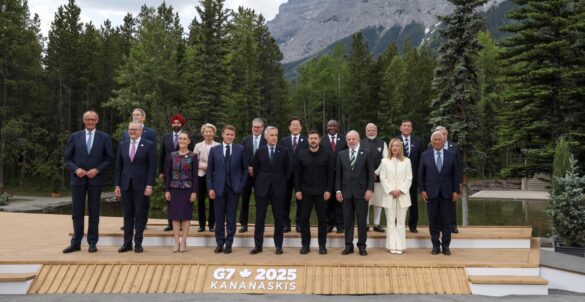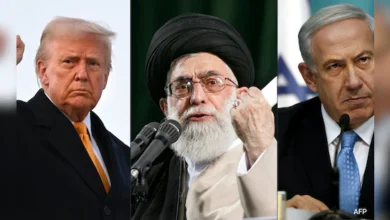
New Delhi | IP News
The 51st G7 Summit, held from June 15–17, 2025, in Kananaskis, Alberta, brought together the world’s major democracies to tackle rising global challenges – from the Israel-Iran conflict to U.S. trade protectionism and the prolonged Russia–Ukraine war.
Hosted by Canadian PM Mark Carney, the summit included the G7 core members, Canada, France, Germany, Italy, Japan, the UK, and the U.S. as well as the EU and invited nations including India.
Key Outcomes & Global Flashpoints
1. Israel-Iran Conflict
-
G7 leaders reaffirmed Israel’s right to self-defense, blaming Iran for “regional instability.”
-
A call for a Gaza ceasefire was issued, but no unified stance emerged.
-
Trump’s early exit on June 16 to address Middle East tensions diluted consensus.
2. Global Trade Disruptions
-
Trump’s “reciprocal tariffs” including a 27% tariff on Indian goods dominated talks.
-
UK sealed a deal, India pushed for one before the July 9 deadline.
-
No joint communiqué on trade was released, signalling G7 disagreement.
3. Ukraine Aid Stalled
-
Trump skipped a scheduled meeting with Zelenskyy, stalling momentum.
-
Canada pledged new support, but diplomacy remained “in crisis,” said Zelenskyy.
India’s Strategic Engagement
PM Narendra Modi, attending his 6th consecutive G7 Summit, leveraged India’s growing global relevance. Key moments included:
-
Bilateral talks with PM Carney and UK PM Keir Starmer.
-
Renewed ties with Canada, agreeing to restore high commissioners.
-
Emphasis on Indo-Pacific security, energy transitions, and digital cooperation.
-
Advocacy for developing economies amid G7–BRICS+ power shifts.
India–Canada bilateral trade hit $8.6B in goods and $14.3B in services (2024), underscoring the need for diplomatic normalisation.
Challenges & Criticisms
-
Trump’s exit echoed the 2018 Quebec G7 breakdown, stalling deliverables.
-
No final communiqué was issued—seen as G7’s inability to maintain unity.
-
Atlantic Council and others argue G7’s structure feels outdated, especially as BRICS+ rises in influence.
-
Indonesia’s absence (President Prabowo skipped for Russia talks) showed waning appeal among emerging powers.
Indian Implications
| Issue | Impact on India |
|---|---|
| U.S. Tariffs | $78B in exports at risk; trade deal talks urgent |
| Middle East Conflict | Oil route via Strait of Hormuz vulnerable |
| Global Instability | Volatile markets, potential drag on 7.2% GDP growth |
| Diplomatic Gains | Stronger Global South positioning; G7-BRICS balance |





